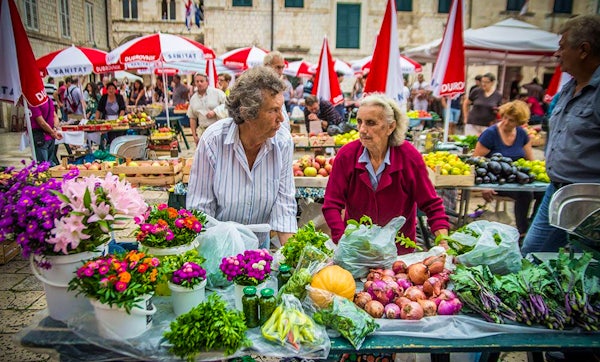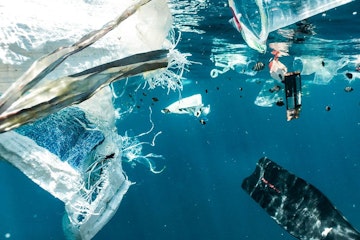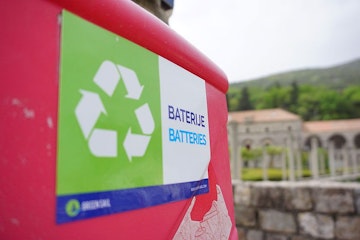6 Eco-Friendly Trends That Will Also Make You Save Money

Protecting the environment requires significant changes, but changes don’t mean sacrifices.
What if you could adopt a more eco-friendly lifestyle and still earn along the way?
We often associate sustainability with more expensive goods, such as organic foods and handmade products. Although these are indeed great for the planet, there are many other ways for you to leave a positive footprint on a tighter budget.
Here are 6 sustainable trends to save money while protecting the environment!
- Reducing meat consumption
Meals containing meat and fish are around 40% more expensive than plant-based ones. Dedicating yourself to a completely vegan diet is an adjustment that requires a lot of adaptation and is sometimes not feasible, but change starts somewhere! Any change, however small, is a good change.
If you currently spend around 100€ per week on groceries, you could reduce your weekly bill to 80€ by cutting your meat consumption in half.
Eating less meat can save you over 1000€ a year!
Above saving money, avoiding meat and fish will positively impact the environment. As of 2021, mass agriculture is one of the industries leading polluters, and meat accounts for almost 60% of all greenhouse gases from food production.
Luckily, both vegan alternatives and vegetarian recipes are gaining more popularity. You can now find a way to cook most meals without using animal products - and still make it taste delicious!

Of course, eating less meat is not the only thing you can do to go green in the kitchen.
If you enjoy fresh vegetables and fruit, consider growing your own! A home garden is a great way to produce organic food, reduce your grocery bills and positively impact the environment.
- Banning single-use plastic
Plastic is a solid and durable material - which is why it takes so many hundred years for it to decompose. Removing plastic from our lives would require many modifications to the products we use every day, including our phones and our fridge!
But 50% of the yearly plastic production is for single-use purposes, such as drinking bottles, grocery bags and straws.
Luckily, it’s the most accessible kind of plastic to remove from your daily habits.
Often, you’ll find the change comes directly from the store owners. Glass bottles and compostable straws are increasing in popularity and, usually, it has no impact on your bill.

Even governments are beginning to contribute with laws banning single-use plastic. Participate in this global effort by making some small changes at low or no cost:
- Bring reusable bags when you go shopping.
- Buy in bulk, bringing old recycled containers.
- Avoid plastic and choose biodegradable cutlery to eat on the go.
- Pick fruit and vegetables that are not wrapped in plastic.
Taking the conscious effort to live with less plastic is where it starts!
- Adopting a no-waste lifestyle
Over 2 billion tons of waste are generated every year worldwide, with a daily average per person of about 0.74 kilos. If you calculate the figures, you produce 270kg every year!
Now the question is: how can we lower that number?
Firstly, you need to understand what type of waste you produce regularly. Be aware of the amount of trash you throw away and what materials you discard the most.
Anything that goes in the garbage bin is what you should focus on first. These products are usually the slowest to decompose and stay in our ecosystem for the longest.
Think about how you can avoid using these materials. Perhaps opting for more sustainable packaging or discontinuing buying particular goods you know will produce a good deal of waste.
For everything else, you have many ways to dispose of your trash.

Organic waste can be composted. You can recycle plastics, paper, metals and glass. Just make sure to put the materials in the proper bin to facilitate the work of recycling companies!
Furthermore, many countries offer a refund or deposit system to encourage people to return their empty glass and plastic bottles. What may start as a couple of cents adds up to a much more significant amount at the end of a year.
Although recycling is an excellent first step, try to be creative and discover new ideas to reduce waste production. That will always be the most eco-friendly option!
- Shopping for sustainable fashion
Fast fashion has been gaining more and more popularity in the past few years, especially with social media influencers. With a constant need for new, the turnaround rate for clothing has escalated, making fast fashion brands such as Shein, Fashion Nova, and H&M expand at the quickest pace.
In 2019, the fashion industry produced more carbon emissions than international flights and maritime shipping together. Cheaper clothes don’t have a long lifespan and are rarely recycled, ending up in landfills and contributing to global waste production.
It’s very tempting to follow the trend and opt for these fast fashion options on a tighter budget!
Apart from their environmental consequences, these clothing brands face new challenges with consumers regarding ethical and sustainability practices driving change for more eco-friendly options.
Now, where can you shop while keeping the environment in mind?
Merchants are becoming more involved in this change, and the variety of eco-friendly brands is growing quite fast. While some of them may be on the pricey side, they often compensate with a much better quality of clothing.

A big trend is thrifting; giving old clothes a new life.
Thrift stores are great as they offer unique pieces you won’t find anywhere else. Not only this, second-hand stores allow you to find clothing for a fraction of the price, which is especially important for those on a budget.
Crafting your clothes can be an excellent way to have original pieces if you feel even more creative or want to pick up a new skill. You could also use your sewing skills to give a second life to your clothes by changing their style or repurposing them to make them last longer.
- Traveling responsibly
Because of the transportation involved, tourism can be a very polluting industry. It contributes to about 5% of global greenhouse emissions, and mass tourism only increases this number.
Fortunately, you don’t need to stop travelling to lower your ecological footprint!
If you want to keep exploring the world with an eased mind, you can become a sustainable traveller. This means that you will better understand your impact on the environment and the communities you are visiting.
Sustainable tourism is about choosing means of transport, accommodations and activities provided mainly by locals and as eco-friendly as possible. For example, this could imply travelling by boat, sleeping in an ecolodge or horseback riding.

Many platforms now exist to find these responsible experiences, such as Vaolo, Holiable and Coral Road.
On your next trip, you should try ecotourism!
Going off the beaten path keeps you further from seasonal price inflations, allowing you to save money on your holiday budget. Not only will you be in for a more authentic experience, but you’ll also experience a unique way of connecting with locals and discovering breathtaking sceneries.
- Sharing the road
Transportation can be expensive, especially if you own a car. Registration, gas, insurances, mechanical maintenance - it all adds up very quickly!
Alternative ways such as buses and trains are excellent to reduce the number of cars on the road, but they can also be quite expensive sometimes.
Luckily, ride-sharing has become more accessible for long and short distances. Not only will you save money, but sharing a car helps reduce gas emissions and traffic at the same time.
It’s a triple-win situation!

Thanks to technology, you can now arrange to split the fare of driving quite quickly with friends or even strangers through apps such as BlaBlaCar or Poparide. Instead of driving alone, you can find other people going to the same destination or in the same direction.
For an even bigger impact on the planet, prioritize services or drivers with electric or hybrid cars. While reducing the bill for gas, these alternatives produce fewer emissions.
Each action counts!
Whether you eat less meat, compost your organic waste or book in an ecolodge, every action you take can bring you closer to an eco-friendly lifestyle.
And we’ve seen that you don’t need to spend loads of money to achieve sustainability!
Give yourself some clear goals and slowly start making changes to your habits. If you can adopt one of these trends every 2 months, you’ll have a much greener and cheaper lifestyle within a year.
Most importantly, share your experience with your community.
Inspire other people to follow your lead and reduce their negative impact on the planet, one habit at a time!